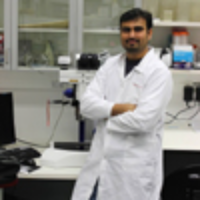Publish with Us
Mathematics & Physics Group
International Journal of Physics Research and Applications- ISSN:2766-2748 IJPRA
Chemistry Group
Biology Group
Annals of Proteomics and Bioinformatics- ISSN:2640-2831 APB
Archives of Biotechnology and Biomedicine- ISSN:2639-6777 ABB
Insights in Biology and Medicine- ISSN:2639-6769 IBM
Journal of Forensic Science and Research- ISSN:2575-0186 JFSR
Journal of Plant Science and Phytopathology- ISSN:2575-0135 JPSP
Pharma Group
Engineering Group
Clinical Group
Medical Group
micro-ct
Influence of retreatment in the formation of dentinal microcracks in mandibular molars filled with a calcium silicate based sealer
- Luciana da Cruz Ribeiro Jorge, Fabiola Ormiga, Aline Neves, Ricardo Tadeu Lopes and Heloisa Gusman*
Published on: 9th April, 2021
OCLC Number/Unique Identifier: 9124848008
Search by University/Institution
Enter your University/Institution to find colleagues at HSPI.
Ensuring author's satisfaction with
- Friendly and hassle-free publication process
- Less production time of articles
- Constructive peer-review
- Enhancing journal reputation
- Regular feedback system
- Quick response to authors' queries
Most Viewed Keywords
- Visual evoked potentials
- Groundwater
- Sars-COV-2
- Nimodipine
- Ecological region
- Diabetic retinopathy
- Dexmedetomidine
- Cast glass-coated amorphous magnetic microwire
- Myocardium
- Armillaria mellea
- Didactics
- Phaseolus vulgaris L.
- Polyethylene glycol
- Pulmonary mucormycosis
- NSU
- Cyclical cosmology
- Wood waste
- Addis Ababa
- Tanker water
- Teratology of fallot
Search Articles by Country
Get all latest articles in all Heighten Science Publications Inc journals by country.
Testmonials
![]()
The service is nice and the time of processing the application is fast.
Long Ching
![]()
Dear colleagues! I am satisfied with our cooperation with you. Your service is at a high level. I hope for a future relationship. Let me know if I can get a paper version of the magazine with my artic...
Aksenov V.V
![]()
Thank you very much for accepting our manuscript in your journal “International Journal of Clinical Virology”. We are very thankful to the esteemed team for timely response and quick review proces...
Abdul Baset
![]()
Submission of paper was smooth, the review process was fast. I had excellent communication and on time response from the editor.
Ayokunle Dada
![]()
In my opinion, you provide a very fast and practical service.
Ahmet Eroglu
![]()
''Co-operation of Archives of Surgery and Clinical Research journal is appreciable. I'm impressed at the promptness of the publishing staff and the professionalism displayed. Thank you very much for y...
Anıl Gokce
![]()
Thank you very much for your support and encouragement. I am truly impressed by your tolerance and support. Thank you very much
Nasrulla Abutaleb
![]()
Your service is very good and fast reply, Also your service understand our situation and support us to publication our articles.
Ayman M Abu Mustafa
![]()
We appreciate the fact that you decided to give us full waiver for the applicable charges and approve the final version. You did an excellent job preparing the PDF version. Of course we will consider ...
Anna Dionysopoulou
![]()
Your service is very good and fast reply, also your service understand our situation and support us to publication our articles.
Ayman M Abu Mustafa
HSPI: We're glad you're here. Please click "create a new Query" if you are a new visitor to our website and need further information from us.
If you are already a member of our network and need to keep track of any developments regarding a question you have already submitted, click "take me to my Query."




